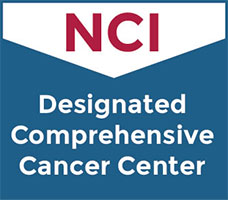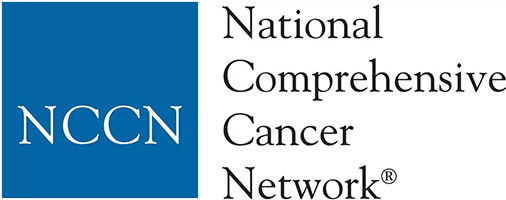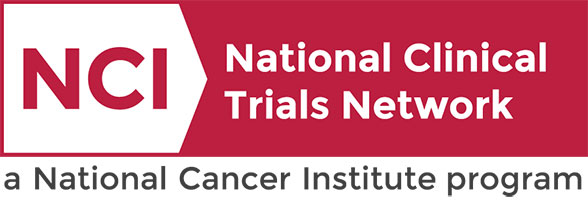Clinical Trials Search at Vanderbilt-Ingram Cancer Center
Chemotherapy for the Treatment of Patients with Newly Diagnosed Very Low-Risk and Low Risk Fusion Negative Rhabdomyosarcoma
Pediatrics
Pediatrics
Rhabdomyosarcoma is a type of cancer that occurs in the soft tissues in the body. This phase III trial aims to maintain excellent outcomes in patients with very low risk rhabdomyosarcoma (VLR-RMS) while decreasing the burden of therapy using treatment with 24 weeks of vincristine and dactinomycin (VA) and examines the use of centralized molecular risk stratification in the treatment of rhabdomyosarcoma. Another aim of the study it to find out how well patients with low risk rhabdomyosarcoma (LR-RMS) respond to standard chemotherapy when patients with VLR-RMS and patients who have rhabdomyosarcoma with DNA mutations get separate treatment. Finally, this study examines the effect of therapy intensification in patients who have RMS cancer with DNA mutations to see if their outcomes can be improved.
Pediatrics
III
Borinstein, Scott
NCT05304585
COGARST2032
A Study of Combination Chemotherapy for Patients with Newly Diagnosed DAWT and Relapsed FHWT
Multiple Cancer Types
This phase II trial studies how well combination chemotherapy works in treating patients with newly diagnosed stage II-IV diffuse anaplastic Wilms tumors (DAWT) or favorable histology Wilms tumors (FHWT) that have come back (relapsed). Drugs used in chemotherapy regimens such as UH-3 (vincristine, doxorubicin, cyclophosphamide, carboplatin, etoposide, and irinotecan) and ICE/Cyclo/Topo (ifosfamide, carboplatin, etoposide, cyclophosphamide, and topotecan) work in different ways to stop the growth of tumor cells, either by killing the cells, by stopping them from dividing, or by stopping them from spreading. This trial may help doctors find out what effects, good and/or bad, regimen UH-3 has on patients with newly diagnosed DAWT and standard risk relapsed FHWT (those treated with only 2 drugs for the initial WT) and regimen ICE/Cyclo/Topo has on patients with high and very high risk relapsed FHWT (those treated with 3 or more drugs for the initial WT).
Pediatrics,
Wilms / Other Kidney (Pediatrics)
II
Benedetti, Daniel
NCT04322318
COGAREN1921
A Study to Compare Standard Therapy to Treat Hodgkin Lymphoma to the Use of Two Drugs, Brentuximab Vedotin and Nivolumab
Multiple Cancer Types
This phase III trial compares the effect of adding immunotherapy (brentuximab vedotin and nivolumab) to standard treatment (chemotherapy with or without radiation) to the standard treatment alone in improving survival in patients with stage I and II classical Hodgkin lymphoma. Brentuximab vedotin is in a class of medications called antibody-drug conjugates. It is made of a monoclonal antibody called brentuximab that is linked to a cytotoxic agent called vedotin. Brentuximab attaches to CD30 positive lymphoma cells in a targeted way and delivers vedotin to kill them. A monoclonal antibody is a type of protein that can bind to certain targets in the body, such as molecules that cause the body to make an immune response (antigens). Immunotherapy with monoclonal antibodies, such as nivolumab, may help the body's immune system attack the cancer, and may interfere with the ability of tumor cells to grow and spread. Chemotherapy drugs such as doxorubicin hydrochloride, bleomycin sulfate, vinblastine sulfate, dacarbazine, and procarbazine hydrochloride work in different ways to stop the growth of cancer cells, either by killing the cells, by stopping them from dividing, or by stopping them from spreading. Cyclophosphamide is in a class of medications called alkylating agents. It works by damaging the cells deoxyribonucleic acid (DNA) and may kill cancer cells. It may also lower the bodys immune response. Etoposide is in a class of medications known as podophyllotoxin derivatives. It blocks a certain enzyme needed for cell division and DNA repair and may kill cancer cells. Vincristine is in a class of medications called vinca alkaloids. It works by stopping cancer cells from growing and dividing and may kill them. Prednisone is in a class of medications called corticosteroids. It is used to reduce inflammation and lower the body's immune response to help lessen the side effects of chemotherapy drugs. Radiation therapy uses high energy x-rays to kill tumor cells and shrink tumors. Adding immunotherapy to the standard treatment of chemotherapy with or without radiation may increase survival and/or fewer short-term or long-term side effects in patients with classical Hodgkin lymphoma compared to the standard treatment alone.
Pediatric Lymphoma,
Pediatrics
III
Smith, Christine
NCT05675410
VICC-NTPED23306
Study to Compare Axicabtagene Ciloleucel With Standard of Care Therapy as First-line Treatment in Participants With High-risk Large B-cell Lymphoma
Lymphoma
Lymphoma
The goal of this clinical study is to compare the study drug, axicabtagene ciloleucel, versus
standard of care (SOC) in first-line therapy in participants with high-risk large B-cell
lymphoma.
standard of care (SOC) in first-line therapy in participants with high-risk large B-cell
lymphoma.
Lymphoma
III
Jallouk, Andrew
NCT05605899
VICCCTT2298
LCH-IV, International Collaborative Treatment Protocol for Children and Adolescents With Langerhans Cell Histiocytosis
Multiple Cancer Types
The LCH-IV is an international, multicenter, prospective clinical study for pediatric
Langerhans Cell Histiocytosis LCH (age < 18 years).
Langerhans Cell Histiocytosis LCH (age < 18 years).
Miscellaneous,
Pediatrics
III
Pastakia, Devang
NCT02205762
VICCPED2231
A Trial to Learn if Odronextamab is Safe and Well-tolerated and How Well it Works Compared to Rituximab Combined With Different Types of Chemotherapy for Participants With Follicular Lymphoma
This study is researching an experimental drug called odronextamab, referred to as study
drug. The study is focused on participants with previously untreated follicular lymphoma (a
type of non-Hodgkin lymphoma or NHL).
This study will be made up of two parts: Part 1 (non-randomized) and Part 2 (randomized -
controlled). The aim of Part 1 of the study is to see how safe and tolerable the study drug
is. The aim of Part 2 of the study is to see how the study drug works compared to rituximab
and chemotherapy (the current standard of care for NHL). Standard of care means the usual
medication expected and used when receiving treatment for a condition.
The study is looking at several other research questions, including:
- What side effects may happen from taking the study drug
- How much study drug is in your blood at different times
- Whether the body makes antibodies against the study drug (which could make the drug less
effective or could lead to side effects)
- The impact from the study drug on your quality of life and ability to complete routine
daily activities.
drug. The study is focused on participants with previously untreated follicular lymphoma (a
type of non-Hodgkin lymphoma or NHL).
This study will be made up of two parts: Part 1 (non-randomized) and Part 2 (randomized -
controlled). The aim of Part 1 of the study is to see how safe and tolerable the study drug
is. The aim of Part 2 of the study is to see how the study drug works compared to rituximab
and chemotherapy (the current standard of care for NHL). Standard of care means the usual
medication expected and used when receiving treatment for a condition.
The study is looking at several other research questions, including:
- What side effects may happen from taking the study drug
- How much study drug is in your blood at different times
- Whether the body makes antibodies against the study drug (which could make the drug less
effective or could lead to side effects)
- The impact from the study drug on your quality of life and ability to complete routine
daily activities.
Not Available
III
Bhaskar, Shakthi
NCT06091254
VICC-DTPCL23483
Dinutuximab with Chemotherapy, Surgery and Stem Cell Transplantation for the Treatment of Children with Newly Diagnosed High Risk Neuroblastoma
This phase III trial tests how well adding dinutuximab to induction chemotherapy along with standard of care surgery radiation and stem cell transplantation works for treating children with newly diagnosed high risk neuroblastoma. Dinutuximab is a monoclonal antibody that binds to a molecule called GD2, which is found in greater than normal amounts on some types of cancer cells. This helps cells of the immune system kill the cancer cells. Chemotherapy drugs such as cyclophosphamide, topotecan, cisplatin, etoposide, vincristine, dexrazoxane, doxorubicin, temozolomide, irinotecan and isotretinoin, work in different ways to stop the growth of cancer cells, either by killing the cells, by stopping them from dividing or by stopping them from spreading. During induction, chemotherapy and surgery are used to kill and remove as much tumor as possible. During consolidation, very high doses of chemotherapy are given to kill any remaining cancer cells. This chemotherapy also destroys healthy bone marrow, where blood cells are made. A stem cell transplant is a procedure that helps the body make new healthy blood cells to replace the blood cells that may have been harmed by the cancer and/or chemotherapy. Radiation therapy is also given to the site where the cancer originated (primary site) and to any other areas that are still active at the end of induction.
Not Available
III
Benedetti, Daniel
NCT06172296
VICC-NTPED24104


